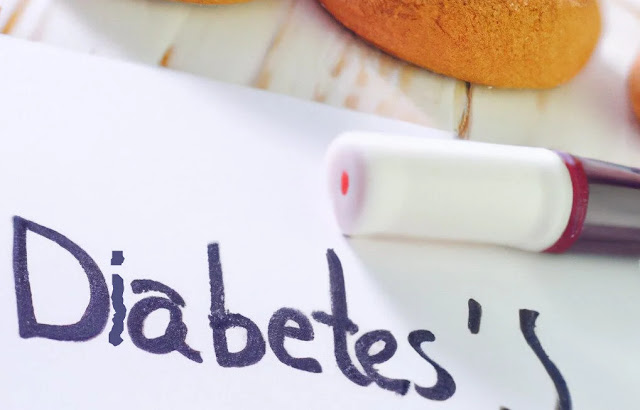Type 2 diabetes, once primarily associated with adults, is now increasingly affecting teenagers, especially males. Early detection and prevention are crucial to managing the condition effectively and minimizing the risk of long-term complications. This article will explore the signs of type 2 diabetes in teenage males, the causes of the condition, its symptoms, and actionable steps for prevention.
Type 2 diabetes is a metabolic disorder characterized by the body's inability to properly regulate blood sugar levels. In teenage males, it is important to be aware of the signs and symptoms of this condition to ensure early intervention and appropriate treatment. By recognizing the warning signs, individuals and their families can take proactive steps toward maintaining optimal health.
Signs of Type 2 Diabetes in Teenage Males
While it is more commonly associated with adults, it can also occur in teenagers, and recognizing the signs and symptoms is crucial for early detection and management. Here are some additional signs of type 2 diabetes in teenage males:
- Increased hunger: Constant feelings of hunger, even after consuming a meal or snack. This may be accompanied by cravings for sugary or high-carbohydrate foods.
- Unexplained fatigue: Persistent tiredness and a lack of energy, even after getting enough sleep. Fatigue can interfere with daily activities, school performance, and overall quality of life.
- Tingling or numbness: Some individuals with type 2 diabetes may experience tingling or numbness in the hands or feet. This is known as peripheral neuropathy and is caused by nerve damage.
- Skin darkening: Dark, velvety patches of skin, usually in the folds or creases of the body, such as the neck, armpits, groin, or elbows. This condition, known as acanthosis nigricans, can be an indicator of insulin resistance.
- Increased thirst and frequent urination: Excessive thirst, even after drinking plenty of fluids. Frequent trips to the bathroom to urinate, particularly at night. This occurs because the kidneys try to eliminate excess sugar from the blood by excreting it in the urine.
- Unexplained weight loss or weight gain: Significant weight loss without changes in diet or physical activity. Unexplained weight gain, especially around the abdominal area. These changes in weight can occur due to the body's inability to properly regulate blood sugar levels.
- Blurred vision: Difficulty focusing or experiencing blurry vision. Vision changes that are not associated with other eye conditions. High blood sugar levels can cause the lens in the eye to swell, resulting in visual disturbances.
- Slow wound healing: Cuts, bruises, or sores that take longer to heal than usual. Increased susceptibility to infections in the affected areas. Elevated blood sugar levels can impair the body's ability to repair damaged tissues and fight off infections.
- Recurrent infections: Frequent urinary tract infections (UTIs). Teenage males with type 2 diabetes may experience recurrent episodes of UTIs due to the presence of excess sugar in the urine. They may also be more prone to yeast infections, particularly in the groin area, due to the favorable environment created by high blood sugar levels.
It is important to note that experiencing one or more of these symptoms does not necessarily mean a teenager has type 2 diabetes. However, if any of these signs are present, it is essential to consult a healthcare professional for proper evaluation and diagnosis. Early detection and appropriate management of type 2 diabetes can help prevent complications and promote long-term health.
What Causes Type 2 Diabetes?
Type 2 diabetes in teenage males is a complex condition influenced by a combination of genetic and environmental factors. Understanding the underlying causes can provide valuable insights into the development of the disease and empower individuals to make informed decisions about their health and take appropriate preventive measures.
1. Role of genetics and family history: There is a significant genetic component to type 2 diabetes. Having a family history of the disease increases an individual's risk. Certain genetic variants can predispose individuals to insulin resistance, impaired glucose metabolism, and an increased likelihood of developing diabetes. However, it's important to note that genetics alone do not determine the development of type 2 diabetes. Environmental factors play a crucial role as well.
2. Influence of lifestyle factors: Environmental factors, particularly lifestyle choices, can significantly impact the risk of developing type 2 diabetes.
- Sedentary behavior and lack of physical activity: Insufficient physical activity is strongly associated with insulin resistance and an increased risk of developing diabetes. Sedentary behaviors, such as excessive screen time or prolonged periods of sitting, contribute to a lack of energy expenditure and reduced insulin sensitivity.
- Unhealthy diet: Poor dietary choices, particularly a diet high in sugar, processed foods, and unhealthy fats, can contribute to the development of type 2 diabetes. Consuming excessive amounts of sugary beverages, fast food, snacks, and sweets can lead to weight gain, insulin resistance, and impaired glucose metabolism.
- Obesity and excess body weight: Excess body weight, especially when concentrated around the abdominal area, is a significant risk factor for type 2 diabetes. Obesity contributes to chronic low-grade inflammation and insulin resistance, making it harder for the body to regulate blood sugar levels effectively.
It's important to note that these lifestyle factors are modifiable, meaning individuals can make changes to their habits and reduce their risk of developing type 2 diabetes. Adopting a healthy lifestyle that includes regular physical activity, a balanced diet rich in whole foods, and maintaining a healthy weight can help prevent or manage the condition.
Furthermore, recognizing the interplay between genetics and environmental factors can help healthcare professionals provide personalized guidance and interventions to individuals at higher risk. This may involve genetic testing to identify specific risk factors, providing targeted lifestyle interventions, and implementing regular monitoring to detect early signs of insulin resistance or impaired glucose metabolism.
Ultimately, by understanding the multifactorial nature of type 2 diabetes and addressing both genetic and environmental factors, individuals can take proactive steps to reduce their risk, manage the condition effectively, and improve their overall health and well-being.
Symptoms of Type 2 Diabetes
Recognizing the symptoms of type 2 diabetes in teenage males is crucial for early diagnosis and intervention. Although some symptoms may overlap with type 1 diabetes, there are specific signs to be aware of:
- High blood sugar levels: Frequent feelings of thirst and excessive hunger. Elevated blood glucose readings during medical tests.
- Increased hunger and appetite: Feeling hungry shortly after eating a meal. Craving sugary or high-carbohydrate foods.
- Numbness or tingling in the hands or feet: Peripheral neuropathy resulting from high blood sugar levels. Loss of sensation or tingling in extremities.
- Skin problems and darkened patches: Darkened areas of skin, often around the neck, armpits, or groin. Skin tags or rough, velvety patches known as acanthosis nigricans.
- Frequent yeast infections: Recurrent fungal infections, particularly in warm and moist areas. Yeast infections in the mouth, known as thrush
What Can You Do to Prevent Diabetes?
Prevention plays a crucial role in combating type 2 diabetes in teenage males. Adopting a healthy lifestyle and making informed choices can significantly reduce the risk of developing the condition.
- Healthy eating habits: Focus on a balanced diet consisting of whole foods. Limit consumption of sugary and processed foods. Practice portion control and mindful eating.
- Regular physical activity: Engage in aerobic exercises like walking, swimming, or cycling. Incorporate strength-training exercises to build muscle. Find enjoyable physical activities to maintain consistency.
- Maintaining a healthy weight: Set realistic weight goals with the help of healthcare professionals. Seek support from friends, family, or support groups. Monitor progress and make adjustments as necessary.
- Regular health check-ups and screenings: Monitor blood sugar levels and other relevant health markers. Identify risk factors and take appropriate actions. Stay up-to-date with vaccinations and other preventive measures.
- Education and awareness: Educate teenagers about the risks and warning signs of diabetes. Promote healthy lifestyle choices in schools and communities. Encourage peer support and positive reinforcement.
Recognizing the signs of type 2 diabetes in teenage males and taking preventive measures is essential for maintaining their long-term health and well-being. By adopting a healthy lifestyle, making informed choices, and seeking regular medical care, individuals can significantly reduce the risk of developing diabetes and its associated complications. Empower yourself and your loved ones with knowledge and take proactive steps towards a healthier future.


